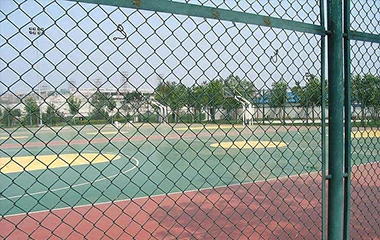 TEL:
+86-13102802206
TEL:
+86-13102802206
 Email:
fencenetting@china.com
Email:
fencenetting@china.com
 Language
Language
 TEL:
+86-13102802206
TEL:
+86-13102802206
 Email:
fencenetting@china.com
Email:
fencenetting@china.com
 Language
Language


Understanding MIG Welding for Cast Iron Techniques and Benefits
MIG (Metal Inert Gas) welding has become an increasingly popular method for various metal fabrication processes, including cast iron. Traditionally, welding cast iron posed significant challenges due to its brittleness and susceptibility to cracking. However, advancements in MIG welding technology have made it feasible to employ this technique for cast iron applications effectively.
Understanding MIG Welding for Cast Iron Techniques and Benefits
One of the standout features of MIG welding is its ability to provide a continuous feed of filler material. This characteristic allows for a more stable arc and better control over the heat input. When working with cast iron, controlling the heat is crucial to minimize distortion and cracking. By utilizing a suitable filler metal, MIG welding can effectively bond cast iron components while maintaining their integrity.

When selecting the right filler material for MIG welding cast iron, it is typical to choose an alloy that matches the properties of the base material. Stainless steel or nickel-based fillers are often recommended for their compatibility. The choice of filler affects the weld's mechanical properties, such as tensile strength and ductility. Therefore, careful consideration must be given to the filler material to achieve optimal results.
Another advantage of MIG welding for cast iron is the versatility it offers. The process can be adapted for various positions and thicknesses, making it suitable for repairing cast iron components efficiently. With the right setup, MIG welding can provide cleaner beads and faster travel speeds compared to other welding methods, which can lead to less distortion and more precise welds.
Preparation is key when MIG welding cast iron. Proper cleaning of the weld area to remove any oil, rust, or paint will enhance the quality of the weld. Preheating the cast iron before welding is also advisable, as it helps in reducing thermal shock and minimizes the risk of cracks forming in the weld. Typically, a preheat temperature of around 400°F (200°C) is recommended, followed by a controlled cooling rate after welding to maintain the material's stability.
In conclusion, MIG welding presents a compelling option for working with cast iron, offering a blend of efficiency and effectiveness. With careful consideration of filler materials, proper surface preparation, and adequate heat management, welders can create strong joints that extend the life of cast iron components. As the technology continues to evolve, MIG welding is set to play an even more significant role in the future of cast iron fabrication and repair.